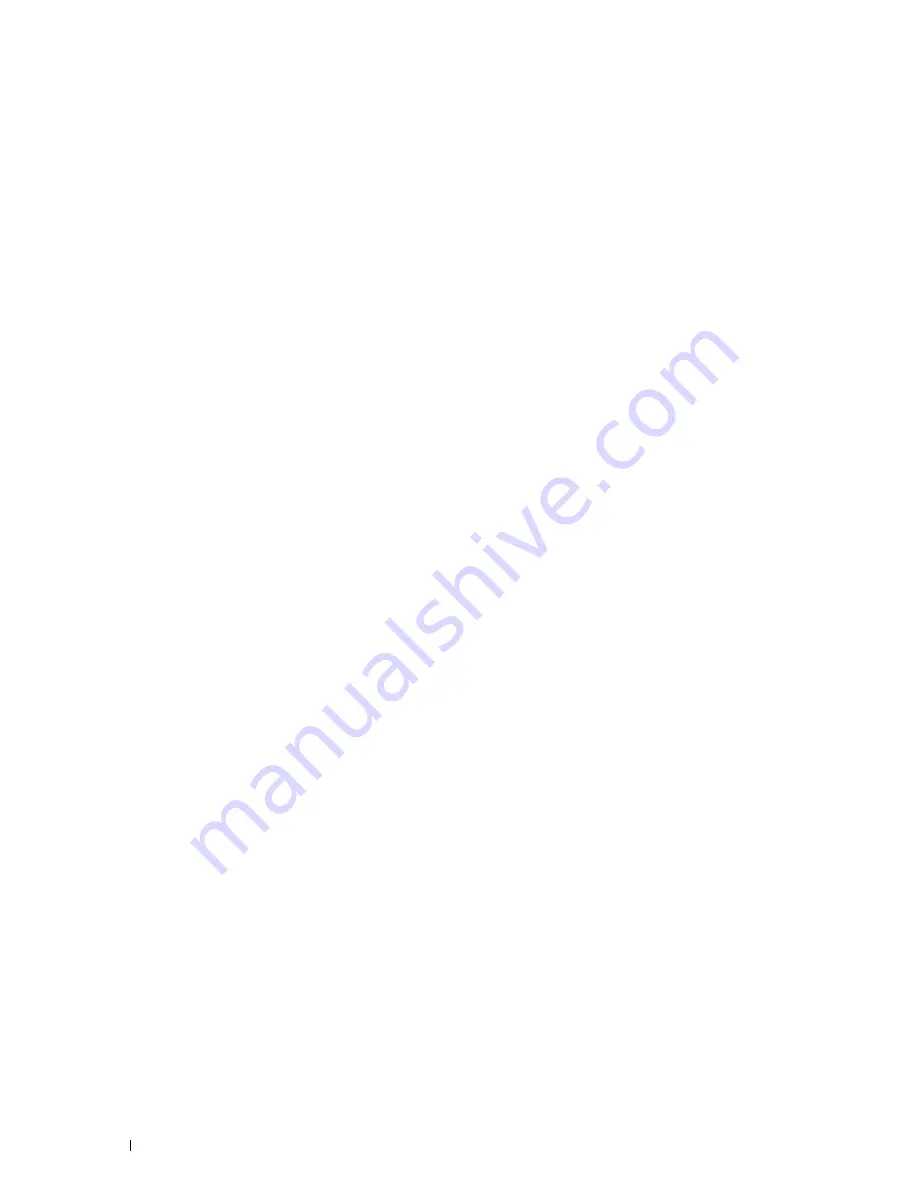
Fiber Content
Most high-quality xerographic paper is made from 100 % chemically pulped wood. Paper containing fibers such as
cotton may lead to degraded paper handling.
Recommended Paper
To ensure the best print quality and feed reliability, use 75 g/m
2
(20 lb) xerographic paper. Business paper designed
for general business use also provides acceptable print quality. Only use paper able to withstand high temperatures
without discoloring, bleeding, or releasing hazardous emissions. The laser printing process heats paper to high
temperatures. Check with the manufacturer or vendor to determine whether the paper you have chosen is
acceptable for laser printers.
It is recommended that you try a sample first before buying large quantities of any print media. When choosing any
print media, you should consider the weight, fiber content, and color.
Unacceptable Paper
The following paper types are not recommended for use with the printer:
•
Chemically treated paper used to make copies without carbon paper, also known as carbonless paper, carbonless
copy paper (CCP), or no carbon required (NCR) paper.
•
Preprinted paper with chemicals that may contaminate the printer.
•
Preprinted paper that can be affected by the temperature in the fusing unit.
•
Preprinted paper that requires a registration (the precise print location on the page) greater than ±0.09 inches,
such as optical character recognition (OCR) forms.
In some cases, you can adjust registration with your software program to successfully print on these forms.
•
Coated paper (erasable bond), synthetic paper, and thermal paper.
•
Rough-edged, rough or heavily textured surface paper, or curled paper.
•
Recycled paper containing more than 25 % post-consumer waste that does not meet DIN 19 309.
•
Multiple-part forms or documents.
•
Print quality may deteriorate (blank spaces or blotches may appear in the text) when printing on talc or acid paper.
Selecting Paper
Proper paper selection helps prevent jams and ensures trouble-free printing.
To help avoid jams or poor print quality:
•
Always use new, undamaged paper.
•
Before loading the paper, identify the recommended print side of the paper. This information is usually indicated
on the paper package.
•
Do not use paper that you have cut or trimmed.
•
Do not mix print media sizes, weights, or types in the same source. This may result in a paper jam.
•
Do not remove the tray while printing is in progress.
•
Ensure that the paper is properly loaded in the tray.
•
Flex the paper back and forth, and then fan them. Straighten the edges of the stack on a level surface.
Print Media Guidelines
202
Summary of Contents for C2660dn
Page 1: ...Dell C2660dn Color Laser Printer User s Guide Regulatory Model C2660dn ...
Page 2: ......
Page 16: ...Template Last Updated 2 7 2007 14 Contents ...
Page 18: ...16 ...
Page 20: ...Notes Cautions and Warnings 18 ...
Page 22: ...Dell C2660dn Color Laser Printer User s Guide 20 ...
Page 26: ...24 Finding Information ...
Page 28: ...26 Product Features ...
Page 34: ...32 About the Printer ...
Page 36: ...34 ...
Page 38: ...36 Preparing Printer Hardware ...
Page 62: ...60 Setting the IP Address ...
Page 66: ...64 Loading Paper ...
Page 82: ...Installing Printer Drivers on Windows Computers 80 ...
Page 94: ...Installing Printer Drivers on Linux Computers CUPS 92 ...
Page 96: ...94 ...
Page 100: ...98 Operator Panel ...
Page 148: ...146 Dell Printer Configuration Web Tool ...
Page 202: ...200 Understanding the Printer Menus ...
Page 214: ...212 Loading Print Media ...
Page 215: ...Printing 19 Printing 215 213 ...
Page 216: ...214 ...
Page 234: ...232 ...
Page 270: ...268 ...
Page 304: ...302 Maintaining Your Printer ...
Page 322: ...320 Clearing Jams ...
Page 323: ...Troubleshooting 28 Troubleshooting Guide 323 321 ...
Page 324: ...322 ...
Page 349: ...Appendix Appendix 349 Index 351 347 ...
Page 350: ...348 ...






























